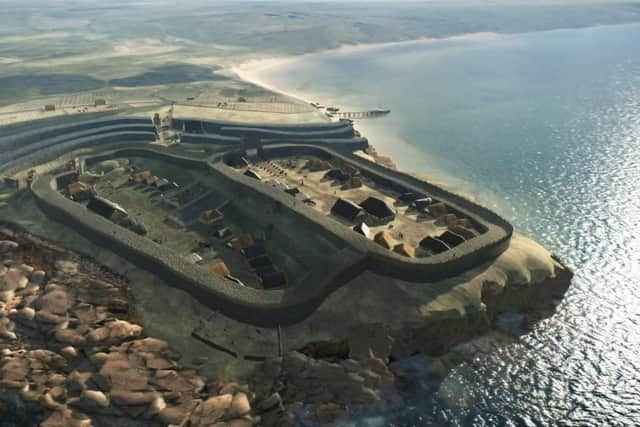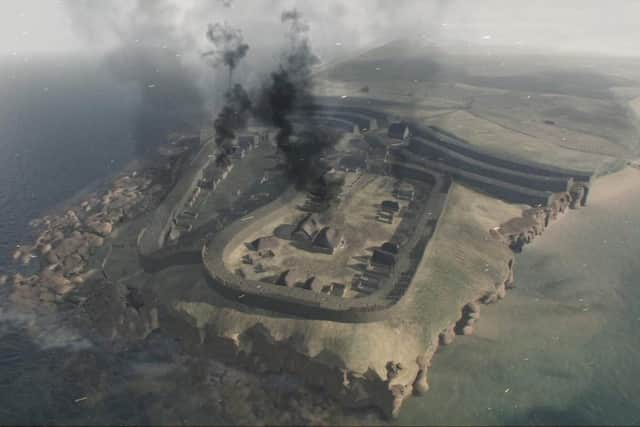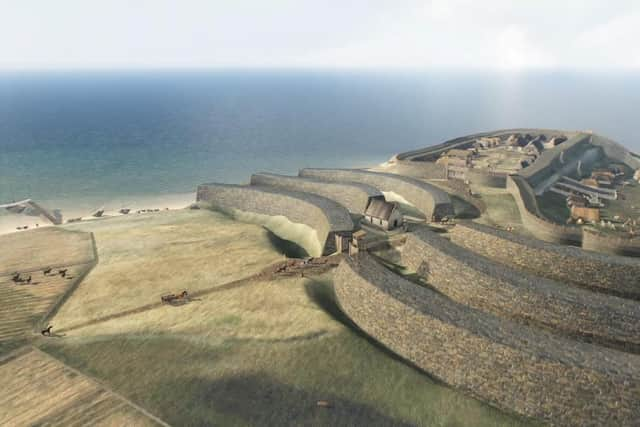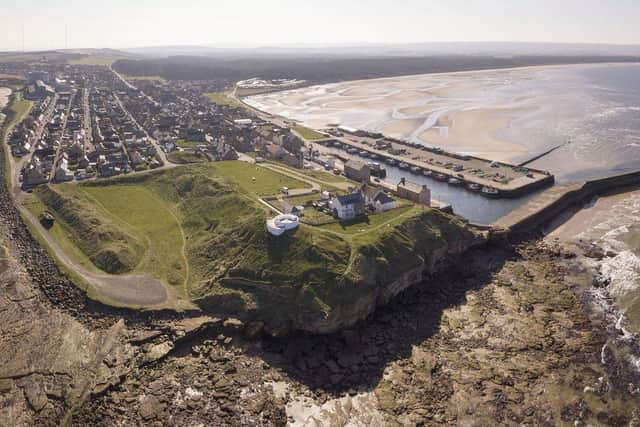The Picts: Largest known Scottish fort brought to life in stunning reconstruction
Images of Burghead fort in Moray – a densely populated site surrounded by an eight-metre thick rampart – have been created following archaeological excavations by the University of Aberdeen.
It has long been known that Burghead was home to a Pictish settlement, which was burned to the ground around the 10th Century when Vikings were attacking the Moray coast.
Advertisement
Hide AdAdvertisement
Hide AdTraces of this powerful chapter of Burghead’s history were thought to have been wiped away during the 19th Century development of the modern town.


But archaeologists on a project led by Aberdeen University’s Professor Gordon Noble, and funded by both Historic Environment Scotland and the Leverhulme Trust, have yielded some of the most significant Pictish items and building remains ever uncovered.
Professor Noble said: “The scale of houses and buildings we have discovered evidence of show that this was a densely populated and important Pictish site.
“We have found many objects which have helped us to learn more about the everyday lives of Burghead’s inhabitants between the 6th and 10th centuries AD. From metalworking to weaponry and even hair and dress pins, with each new dig we are finding out more about our ancestors who lived here.


“The foundations of the huge ramparts have survived far better than anyone anticipated, despite their wilful destruction over the centuries and the midden layers, which is effectively where the Picts threw their rubbish, have provided startling insights into the lives of the Picts to the archaeologists.
“It wonderful to see the work of our excavations spanning more than five years brought together in these stunning reconstructions which offer an amazing insight into how Burghead may have looked.”
When the town was redeveloped, the landward ramparts were levelled and part of the seaward defences was destroyed in order to build the modern harbour.
More than 30 Pictish carved stones and fragments of early Christian sculpture were found, with Burghead long considered a major centre for the northern Picts.


Advertisement
Hide AdAdvertisement
Hide AdThe reconstructions were coordinated by Dr Alice Watterson of the University of Dundee with additional filming and editing work by Kieran Duncan and arial drone filming by Dr Kieran Baxter, members of Dundee’s 3DVisLab research group.
Dr Watterson added: "Burghead has certainly been one of our most challenging projects to date. Not only has it been one of the largest sites I have reconstructed, but in order to model its full extent we had to completely remodel the landscape to remove the modern town and rebuild the eroded cliffs."
Dr Kevin Grant, Archaeology Manager of Historic Environment Scotland described Burghead fort as one of the most important places in Early Medieval Scotland.
He added: “These reconstructions help us imagine experiencing this spectacular site in its hey-day. We are also delighted to support these excavations, which are transforming our understanding of Pictish Scotland and saving important archaeological remains from being lost to the waves.”


More funding from Historic Environment Scotland is supporting further excavations at the site which it is hoped will further understanding of how those who lived at the site connected to the wider world.
A message from the Editor:Thank you for reading this article. We're more reliant on your support than ever as the shift in consumer habits brought about by Coronavirus impacts our advertisers.
If you haven't already, please consider supporting our trusted, fact-checked journalism by taking out a digital subscription.
Comments
Want to join the conversation? Please or to comment on this article.
